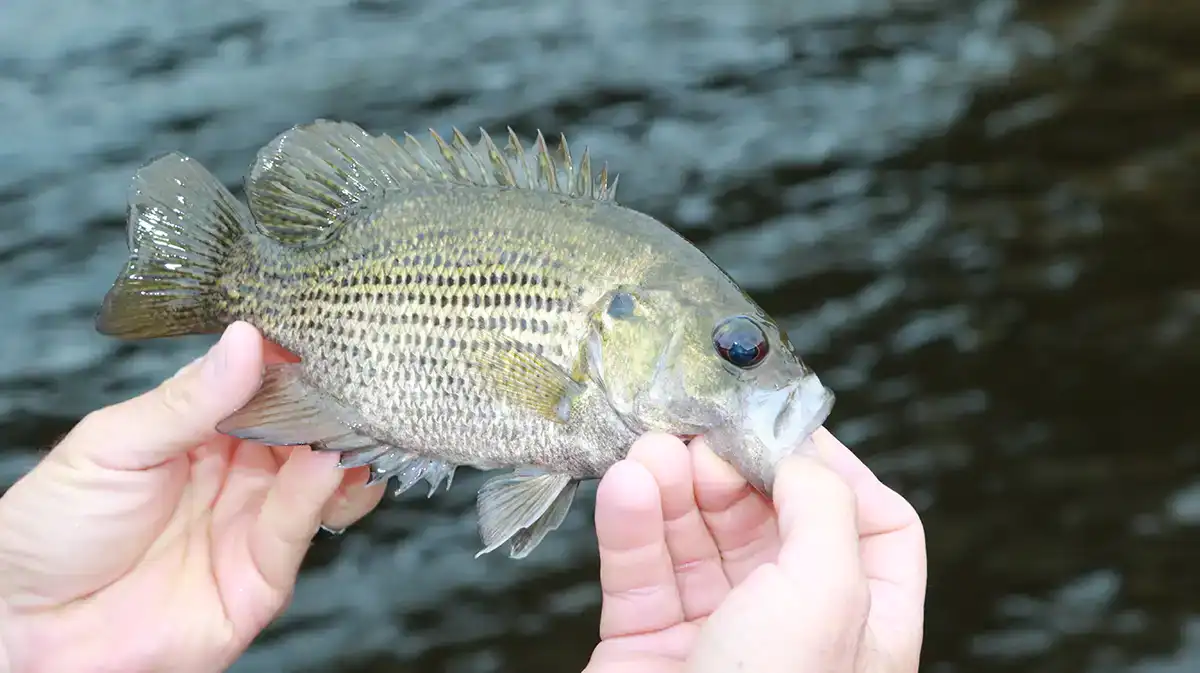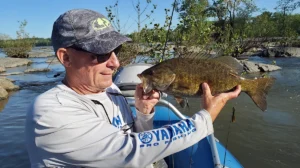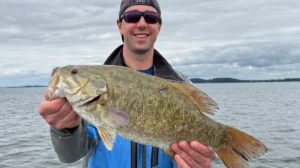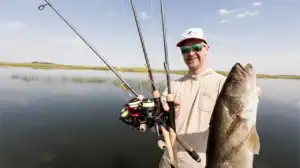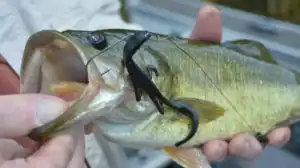Plans are good. Those targets and expectations — solid elements of a well-conceived strategy. But sometimes, the unexpected can compliment the intended.
You try a new restaurant and discover a culinary gem you’ve never tried. You visit your vacation destination and discover the most charming little old world craft shop that wasn’t in the brochure.
Other times, you fire off a cast meant for smallmouth bass, yellow perch, or crappie, only to come tight on a fish that hits like a hammer and pulls like a subway purse snatcher.
We’re talking about the humble rock bass, a member of the panfish family whose oversized peepers earn the nickname, “Goggle Eye.” Widely distributed throughout eastern North America from Canada to Alabama, rock bass have reddish orange eyes, a dark patch on the back edge of each gill cover, light brown sides and distinct horizontal rows of black spots.
Equipped with a mouth big enough for gobbling decent sized crawfish, rock bass also love their aquatic insects and pretty much any minnow and juvenile baitfish a lake or river offers.
Untapped Opportunity
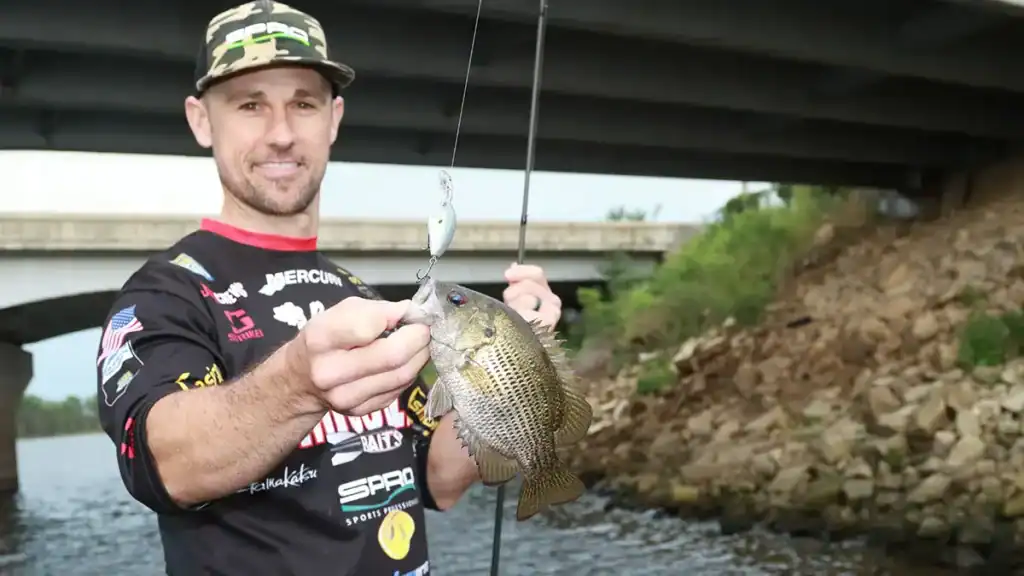
A recent chat with Lake Champlain guide Bryan LaBelle brought back memories of my earliest encounters with this spunky little fish. Like most, LaBelle describes many of his rock bass catches as incidental to his bluegill, perch or crappie pursuits.
However, like anyone who’s caught one of these scrappy fish, LaBelle gives a nod of respect to a highly underutilized resource.
“For their size, they’re pretty good fighters,” LaBelle said. “They’e aggressive; they bite well and they fight well. We often catch them while we’re fishing for other panfish.”
A schooling species, rock bass are driven by feeding competition, so they’re usually quick to react when food avails.
“You just have to get your bait around them and they’ll bite,” LaBelle said.
Habitat Preference
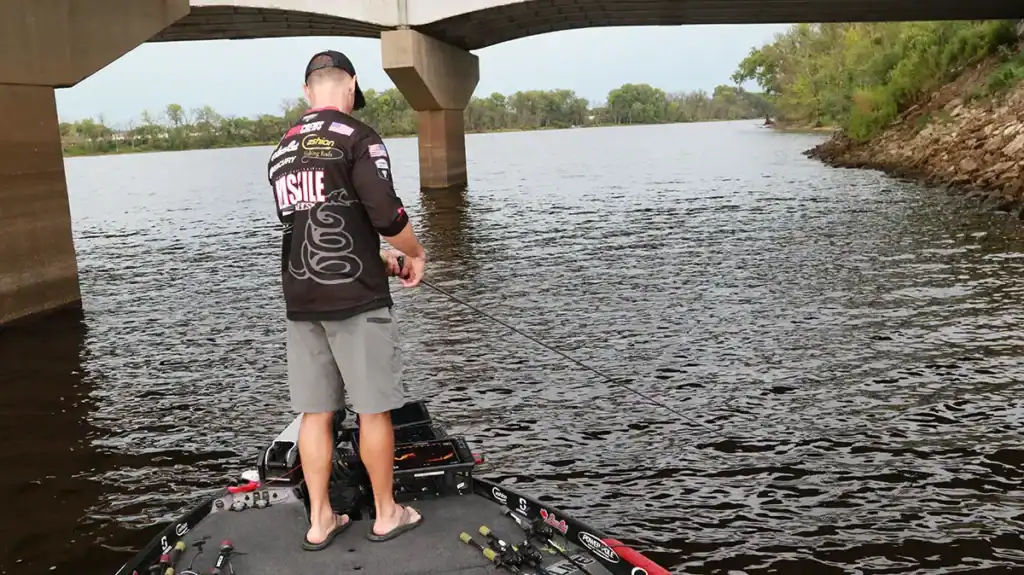
The second part of the Latin name, Ambloplites rupestris, means “among the rocks,” so the common title, rock bass, fits the fish well. The first time I caught one a dozen years ago, I was dropshotting for smallies around shallow boulders and rock reefs on Lake Champlain.
Add to the options, riprap, bridge pilings, gravel bars and scattered chunk rock. And when you consider the ample eyes, it’s no surprise that these fish feed just as well in deeper spots, as the shallow nearshore stuff.
“I have some rock piles in 82 feet that have a ton of them,” LaBelle said. “On Champlain, from the Grand Isle Gut north has the best population of rock bass, but you’ll find them anywhere you find rock (or hard structure).
“On most lakes, they’re just about everywhere, except for grass. They don’t get in the grass.”
When LaBelle’s hunting rock bass, he’ll use his electronics to locate his structure, but that’s about it. No need to glue your eyes to the forward facing sonar screen and mutter the “C’mon, c’mon, eat it. C’mon, c’mon!” verse.
It’s not like you’re trying to fool finicky largemouth, or convince a skeptical smallmouth. The very fact that rock bass rarely make the day’s target list is precisely what makes them worth a look — especially when you’re hosting anglers short in stature and/or experience.
“They’ll bite all the time when you get around them,” LaBelle said. “They’re a lot of fun for kids.”
What Rock Bass Like

Knowing the propensity for finding rock bass in numbers, LaBelle does his best to leverage that feeding competition for expedience. That means a double dropper rig with size 6 long shank Aberdeen hooks and a bell sinker appropriate for his target depth.
Baiting such a rig with minnows or nightcrawlers, you can generally expect a handful of double headers. The other benefit — testing different bait options until you dial in the day’s preference.
On the artificial side, rock bass routinely grab the light jigs and spinners intended for their panfish kin. If LaBelle’s looking for efficient presentations, especially in deep water, he’ll tie on a Trout Magnet — a jig with an angled head for a fast fall and a grub-like body with a split tail for a unique swimming action
“I like to keep it moving, because rock bass are pretty aggressive,” LaBelle said. “If they don’t bite right away, I let the bait fall to the bottom.”
A couple more rock bass memories: In Upstate New York, Highway 345 runs through the town of Madrid and crosses the Grass River, which flows out to the St. Lawrence. Before crossing under the road, the Grass drops over a low waterfall and creates a nice tailrace.
From an observation deck on the north bank, I worked a dropshot with a 6-inch Roboworm and a small swimbait along the current seams behind the manmade water control structure adjacent to the falls. Both baits tempted rock bass up to 8 inches.
Elsewhere, during a bass photoshoot on the Upper Mississippi River with Bassmaster Elite John Crews, we found the rock bass ready and willing under the Interstate-90 Bridge. Tossing a SPRO Little John Micro DD around the bridge pilings, those little hellions twice convinced Crews he’d hooked a fish bigger than the one he slung across the gunnel.
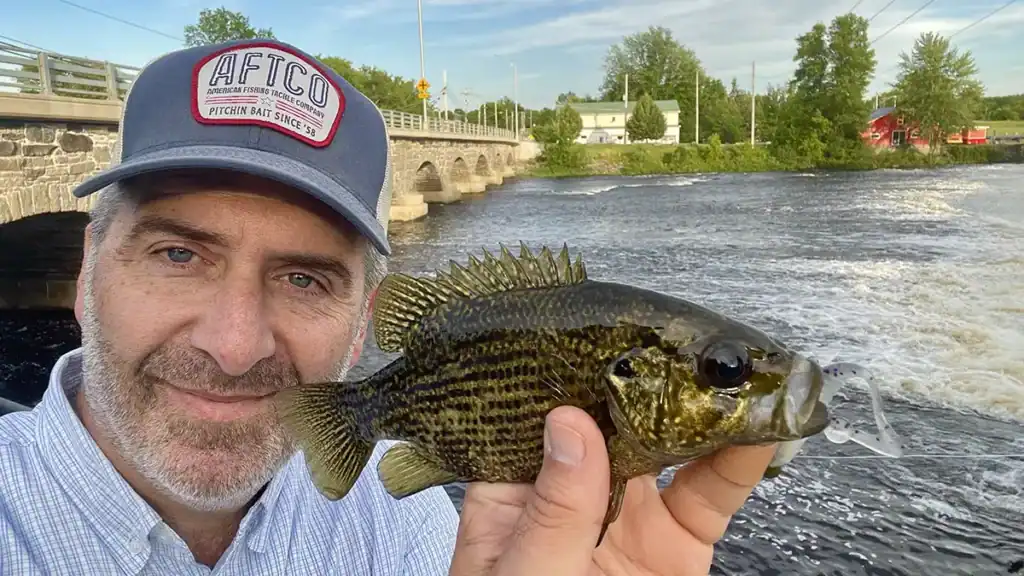
Abundant, eager, not too picky — sounds like the formula for a fish worth a respectful focus.
